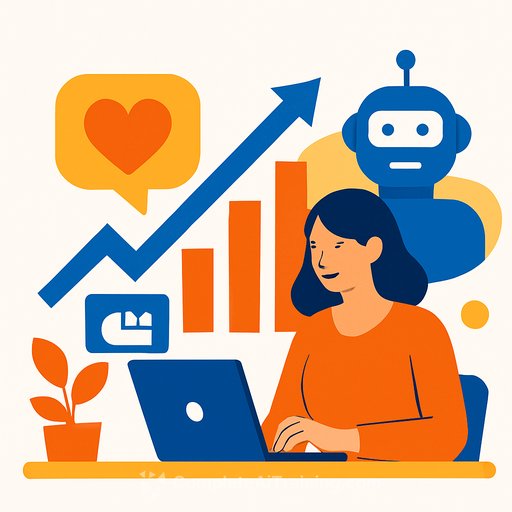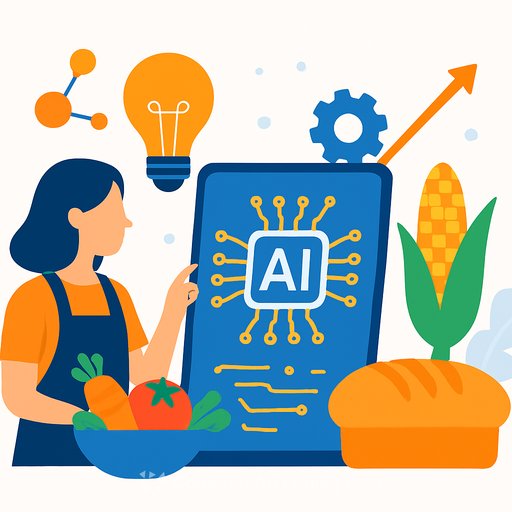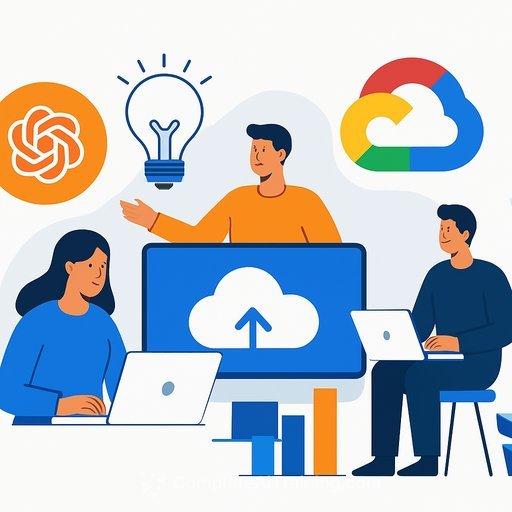How Lovable, the $130M AI Startup, is Growing Faster Than ChatGPT
What if the next big name in AI wasn’t OpenAI or Google, but a startup with just 45 employees? Meet Lovable, an AI-powered platform that’s quietly outpacing ChatGPT in growth. While many focus on generative AI’s potential, Lovable takes a different route: enabling everyday people to create software without writing any code.
With a lean and agile structure, Lovable’s focus on accessible software development has made it a rising star. It challenges the idea that bigger is always better in tech. The real question is not just how fast Lovable is growing, but why its approach might redefine AI-native businesses.
Lovable’s AI-Powered Growth
- Efficient Growth: Lovable has surpassed $130 million in annual recurring revenue (ARR) with just 45 employees, proving how AI-driven models can do more with less.
- Accessible Software Creation: The platform targets solopreneurs and small teams, letting non-technical users build software effortlessly, breaking down traditional barriers.
- Autonomy and Ownership: Lovable empowers employees with full project ownership, speeding up innovation by cutting dependencies.
- AI-Enhanced Workflows: AI automates repetitive tasks, streamlines processes, and frees the team to focus on strategic innovation.
- Legacy Challenges: Older companies struggle to adapt to AI-driven models, while Lovable’s AI-native setup highlights the benefits of agility and user-focused growth.
What Sets Lovable Apart
Lovable’s strength lies in enabling non-technical users to create software easily. By focusing on solopreneurs and small teams, it tackles common productivity and product development challenges head-on. This clear target has fueled its rapid growth and impressive ARR despite a small team.
The platform’s intuitive design lets users build, test, and deploy software without coding skills. This democratization of software development is reshaping the market, making it more inclusive and accessible. Lovable now leads among AI-driven software tools that simplify complex processes for a broader audience.
How Autonomy Drives Speed and Innovation
Lovable’s operational model emphasizes autonomy and ownership. Employees handle projects end-to-end, which reduces bottlenecks and accelerates delivery from concept to customer impact. This culture of independence encourages innovation and flexibility.
The company hires versatile generalists instead of rigid specialists. For niche needs, contractors are brought in, ensuring quality without slowing down progress. This setup boosts creativity and efficiency, allowing the team to move fast and adapt quickly.
The AI-Native Business Model
Lovable exemplifies what it means to be AI-native. Unlike traditional SaaS companies, it integrates AI into every function—from coding and prototyping to decision-making and customer support. This approach drives agility and continuous product refinement in a competitive market.
By automating routine tasks and optimizing workflows, Lovable keeps operational costs low and focuses on delivering real value. Its ability to quickly pivot and meet market demands shows the strength of an AI-first model.
Rethinking Growth and Leadership
Growth at Lovable is built right into the product experience. Teams concentrate on user acquisition, monetization, and retention in an integrated way that supports seamless customer engagement. This alignment keeps growth sustainable and user-focused.
Leadership here is different too. Instead of traditional managers, leaders have vertical expertise and contribute directly to projects. A smaller, flatter structure removes unnecessary hierarchy and fosters collaboration. Decisions happen faster and employees own their impact.
AI’s Role in Transforming Workflows
AI tools are central to Lovable’s productivity. Spec writing, prototyping, and lifecycle marketing are automated, freeing teams to tackle high-impact work. Growth teams morph into AI innovation squads, blending self-serve and human-assisted models to optimize user experiences.
This automation shifts the focus from routine operations to strategic innovation. It’s a clear example of how AI can boost efficiency and creativity in everyday work.
Challenges for Legacy Companies
Legacy organizations often struggle to keep up with AI-driven change. Established structures, resistance to change, and technical debt slow AI adoption. These hurdles limit their ability to modernize workflows and grow with AI.
Lovable’s advantage is starting fresh without outdated systems. This freedom lets it build AI-driven workflows from the ground up, maintaining a competitive edge. Legacy companies that want to stay relevant need to embrace flexibility and rethink how they integrate AI.
The Future of Work with AI
AI will continue automating repetitive tasks, freeing employees to focus on strategic priorities. Growth teams will shift from operational duties to driving outcomes with AI-powered tools. Companies embracing this shift will boost efficiency and open new creative opportunities.
Lovable’s success offers a clear model for the future workplace. By prioritizing agility, innovation, and user-centered design, AI-native companies are setting new standards for what’s possible with fewer resources.
Key Takeaways for Growth Leaders
- Use AI tools to automate routine tasks and focus on high-impact work.
- Promote a culture of autonomy and full project ownership to accelerate innovation.
- Align growth strategies with AI-native product experiences to boost user engagement and retention.
Lovable’s journey shows what AI-native companies can achieve. With a clear focus on agility, innovation, and a fresh take on growth and leadership, it’s setting a new bar for success in an AI-driven world.
Your membership also unlocks:






